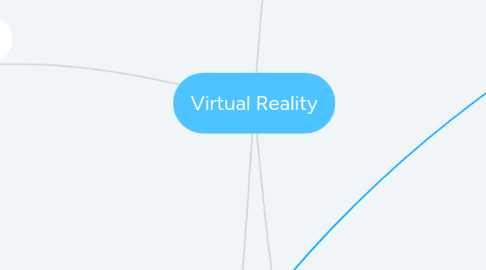
1. How does a VR actually work?
1.1. 2.the technology in VR
1.1.1. Computer graphics technology
1.1.1.1. Moore's law
1.1.2. computer simulation technology
1.1.2.1. IMU sensor
1.1.2.2. Motion capture sensor
1.1.2.3. Proximity sensor
1.1.3. artificial intelligence
1.1.4. sensing technology
1.1.5. display technology
2. 3.usage
2.1. education
2.2. e-commerce(new)
2.2.1. create a better shopping experience
2.2.2. let customer know commodity more Intuitively
2.3. health care(Medical training)
2.3.1. Help paraplegic patients regain limb function
2.3.2. Treatment of PTSD
2.4. the philosophy value
2.4.1. new definition of world
2.4.2. new definition of 'living'
2.5. Training
2.6. Better artistic creation
2.7. Entertainment
2.7.1. Play Video Games
2.7.1.1. Hardware
2.7.1.1.1. HTC vive
2.7.1.1.2. Playstation VR
2.7.1.2. Software
2.7.1.2.1. Star Trek™: Bridge Crew on Steam
2.7.1.2.2. Robinson: The Journey
2.7.2. Watch Movies
2.7.3. shopping online
3. what is it
3.1. history and the development
3.1.1. the first attempt of virtual reality(THE ORINGIN OF TEH VIRTUAL REALITY):the paramanic painting
3.1.1.1. 360 dgree
3.1.1.2. 19th century
3.1.2. discovery of theory of the 3-D imaging
3.1.2.1. 1838
3.1.2.2. Charles Wheatstone
3.1.2.3. content
3.1.3. the benning trying of the VR
3.1.3.1. The stereoscope
3.1.3.1.1. Charles Wheatstone
3.1.3.1.2. 1838
3.1.3.1.3. content
3.1.3.2. 1939 : The View-Master (William Gruber)
3.1.4. A new generation of Virtual Reality
3.1.4.1. the prediction of the VR goggle(science fiction)
3.1.4.1.1. 1930s
3.1.4.1.2. Stanley G. Weinbaum
3.1.4.1.3. content
3.1.4.2. 1929 – Link Trainer The First Flight Simulator
3.1.4.2.1. 1929
3.1.4.2.2. Edward Link
3.1.4.2.3. content
3.1.4.3. the first VR headset to use the motion track: Headsight
3.1.4.3.1. 1961
3.1.4.3.2. Comeau & Bryan
3.1.4.3.3. content
3.1.4.4. the generation of the entertainment VR(now)
3.2. definition
4. impact
4.1. advantage
4.1.1. Immersive experiences
4.1.1.1. medical
4.1.1.1.1. treatment
4.1.1.1.2. tranning
4.1.1.2. driver-tranning
4.1.1.2.1. reduce accident
4.1.1.2.2. reduce liability exposure for the driver-training school
4.1.1.2.3. give a real look of roads and traffic
4.1.1.3. military
4.1.1.3.1. simulating traumatic events
4.1.1.3.2. get familiar with different areas in the battlefield
4.1.1.4. entertainment
4.1.1.4.1. insert participants into imagined worlds
4.1.1.4.2. experience adventures under extreme conditions
4.1.1.4.3. make the gaming experience more real
4.1.1.5. education
4.1.1.5.1. increases students' engagement
4.1.1.5.2. creates interest
4.1.1.6. business
4.1.1.6.1. save time and resources
4.2. disadvantage
4.2.1. health
4.2.1.1. mentally
4.2.1.1.1. unsettling feeling
4.2.1.1.2. cyber-addiction
4.2.1.2. physically
4.2.1.2.1. produces fatigue
4.2.1.2.2. motion sickness
4.2.1.2.3. cyber-sickness
4.2.2. price
4.2.2.1. high cost
4.2.2.2. need to buy smartphone
4.2.3. need a large space

